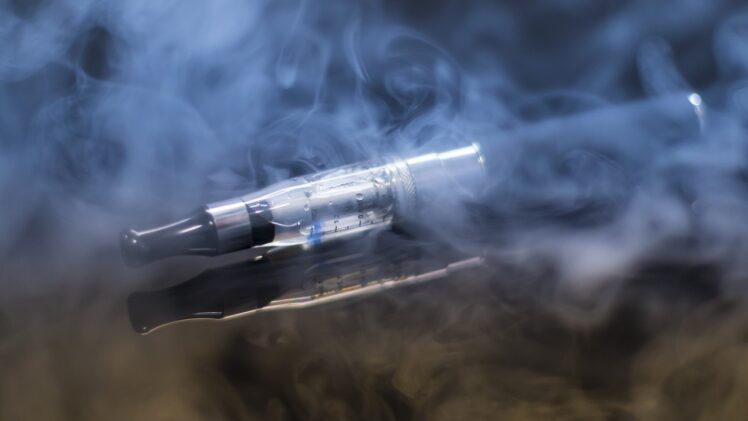Vaping nicotine and smoking tobacco to get nicotine are two fairly different things but some people seem to think it’s all the same. The obvious difference from a scientific perspective is that vaping entails inhaling vapor while smoking entails inhaling smoke. As many vapers already know, tobacco smoke contains a lot of different chemicals, many of which (at least 70) have already been linked to cancer. Then you add in the tar that tobacco smoke contains and the differences between vaping and smoking just continue to expand.
Smoking & Vaping Nicotine Have Clear Differences
As vaping has been around for years, there is now a considerable amount of evidence that vaping is a lot less harmful than smoking, however, both smoking and vaping are capable of delivering nicotine to users. This is actually where the two meet. Although they’re not the same, quite different in fact, they both deliver nicotine. This is important for smokers who want to switch to vaping for the sake of their health and to save money because it’s the nicotine in tobacco smoke that gets people hooked. It’s not the nicotine that is the direct cause of various diseases, contrary to what a lot of people mistakenly believe. That’s all those chemicals found in the smoke — chemicals like arsenic and polonium-210. But because vaping delivers nicotine, some smokers manage to switch from smoking to vaping.
How Much Nicotine Do E-Cigarettes & Normal Cigarettes Contain?
This leads us to the whole debate over how much nicotine e-cigarettes should have in them. In some places, such as the European Union, the amount of nicotine that the e-liquid used with e-cigs is capped. In the EU the limit is 20mg/ml, which might be high enough for some vapers but probably not for all. That’s actually why some vapers use shortfills, which are bottles of e-liquid that usually don’t contain any nicotine and are instead intended to be combined with a shot of nicotine that’s mixed with the e-liquid to create nicotine-infused e-liquid. The reason for doing is this is simple: it allows vapers to circumvent the restriction on the nicotine strength of their vape juice. Canada is considering implementing a similar policy, which would cap the nicotine strength of e-liquids sold in the country at 20mg/ml just like the EU.
For e-cigarettes, the amount of nicotine varies greatly. Sure, there are limits in some places, but in a general sense, they can range from zero nicotine to a lot of nicotine, which is either measured as a percentage or in milligrams per milliliters. Looking at Juul e-cigs sold in the United States, the strength at which their vape pods are sold is 5% (or 59mg/ml).
How Much Nicotine Is Delivered & Absorbed Can Differ Greatly
The average cigarette provides the smoker about 2mg of absorbed nicotine, but this varies based on the brand and the strength of the cigarette. For the most part, however, cigarettes deliver around the same amount of nicotine as the differences between different cigarettes in terms of nicotine isn’t all that substantial, whereas e-liquid is a much different story due to the fact that that e-liquid can be purchased a wide range of nicotine strengths.
For reference, absorbed nicotine is how much actually enters the blood. The amount of nicotine that’s actually in a single cigarette can be anywhere from approximately 6mg to 28mg. Typically, they contain about 11mg.
E-liquids range in nicotine strength from 0mg/ml to over 60mg/ml, which is quite the spread. The amount absorbed varies and there are actually a number of different types of nicotine and different formulations used in e-liquids. For example, there are nicotine salts, which are commonly used with pod vapes, and there are freebase nicotines that are used with other types of vaping devices. Nicotine salts are quite different as modern variants absorb faster and are smoother at higher concentrations.
Nicotine Is Found In Cigarettes But It’s Also Used In Smoking Cessation
Smoking cessation tools like nicotine patches and nicotine gums unsurprisingly contain nicotine. So while nicotine is found in the tobacco used in cigarettes, it’s also used in products intended to help smokers quit smoking. E-cigarettes also use nicotine, which is quite possibly the main reason why some smokers are able to switch from smoking to vaping. Be this the case, nicotine is somewhat of a double-edged sword as it’s what keeps smokers smoking but it’s also what smoking cessation products use to help smokers quit smoking.
What Nicotine Is & What It’s Not
As an article on Healthline that was updated in 2018 has noted, the idea that nicotine causes cancer is not backed by medical science. This could change as researchers continue to study nicotine, but for now, there’s no clearly established link. What science has shown, however, is that there is a multitude of chemicals found in tobacco smoke that have been linked to cancer.
Nicotine, a stimulant, is a chemical that’s found naturally occurring in raw tobacco leaves, which part of the nightshade family of plants. It is the addictive chemical that’s found in tobacco and not just cigarettes, but all forms of processed tobacco. This includes cigars and snuff.
Using Vaping To Quit Nicotine
While many smokers have already switched to vaping, not all of them have quit nicotine. Some are satisfied with vaping instead of smoking, however, there are those who have used vaping’s varying nicotine strengths to slowly taper off their nicotine addiction. They start at one strength, such as 25mg/ml, and then gradually move down to lower strengths. An example of a progression being starting out at 25mg/ml then moving to 18mg/ml, then 12mg/ml, then 6mg/ml, and then eventually 0mg/ml. It may be difficult, but it is possible for some smokers to use vaping to eventually quit nicotine altogether.







